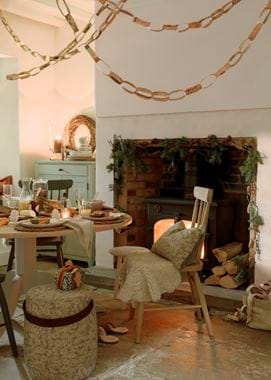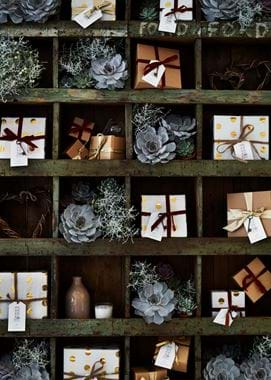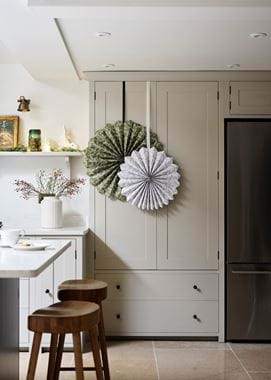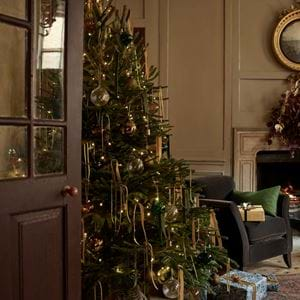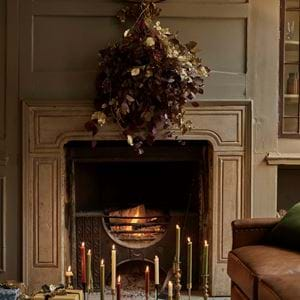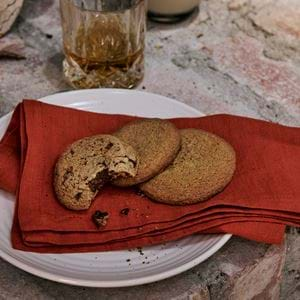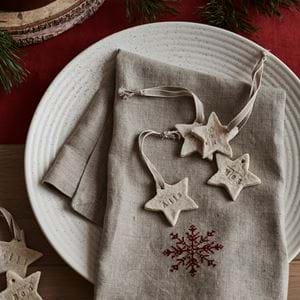Crafting tradition: the stories behind our favourite festive crafts
Crafting tradition: the stories behind our favourite festive crafts
Home crafts are a part of most of our Christmases, even if only in a small way. Whether it’s fashioning a wreath to decorate your front door or drying fruit to hang from the tree, a touch of the homemade adds to the magic. Read on to find out more about the layers of tradition and symbolism that crafts bring to this time of year.
Paper decorations
Most of us, as children, will have sat down to create paper chains in the weeks before Christmas to hang in swags from the ceiling. But few of us will have considered the weight of heritage behind such a humble craft.
There are paper crafts present in folk art traditions across the world. From the Japanese origami and ‘kirigami’ (which also involves cutting and sticking as well as origami folding), to ‘jianzhi’ in China and ‘scherenschnitte’ from Germany and Switzerland, both of which feature elaborately cut-out paper designs. As with many of our Christmas traditions though, it was Prince Albert and Queen Victoria who popularised paper decorations in Britain – they used theirs to decorate their tree.
Paper crafts are so widely practiced because they’re simple (in terms of the materials needed, although not necessarily the skill) and inexpensive. It explains why paper chains, pinwheels and snowflakes are so evocative of a 20th-century childhood Christmas – being accessible in the rationed, post-war years, the ritual of making them each December to decorate the home has lived on.
Advent calendars
Advent – from the Latin for ‘arrival’ – is the period in the Christian church before Christmas. For most, it starts on the Sunday closest to 30th November – four Sundays and four weeks before Christmas Day – but this varies depending on the church. Secular traditions though, have it starting on 1st December, and it’s this date that we take for the Advent calendars we buy – or craft – each year.
There have been lots of ways of marking the passing of the Advent period over the centuries, including fasting and candles. It’s thought that 19th-century German Lutherans are the source of the first calendar – they would mark doors with chalk for each day. And though it’s somewhat contested, most people consider Gerhard Lang to be the creator of the first printed Advent calendar in 1908. As a child, his mother had stuck 24 sweets to a piece of card for him and the idea stuck into adulthood when, after opening a printing press, he was inspired by the family tradition to create a version he could sell to his customers.
Printed calendars made from card – with 24 windows to open revealing festive or religious images behind – are still the most popular form of Advent calendar. But, there are also a whole host of hand-crafting ideas to try, from fabric wall hangings with pockets in which to hide sweets, to jars labelled with cut-out paper numbers and arranged along a shelf, to the German tradition of decorating a wreath with 24 miniature bags or boxes.
Gingerbread
Ginger-flavoured bakes have been around for a while, although, as with most things with such a long history, no one’s quite sure how long. Generally though, it’s considered to have been in late medieval Germany that the baking, shaping and decorating of gingerbread was perfected (the city of Nuremburg in particular is synonymous with its making), and here, the craft is recognised as a specific baking profession. Gingerbread can range from soft cakes to hard biscuits, but whatever form it takes, it’s always sweetened with a sticky syrup such as treacle or honey.
The tradition of crafting elaborately decorated miniature houses out of gingerbread is linked with the Brothers Grimm’s fairy tale ‘Hansel and Gretel’. The children, abandoned and lost in the forest, are lured by a witch to her home made of gingerbread and other sweets, where she intends to fatten them up before cooking them (like most Grimm’s fairy tales, the original is surprisingly dark). Luckily, things end happily when they outwit her and escape. Whether or not the story or the gingerbread house came first though, is up for debate.
Pomanders
The pomander – an orange studded with cloves and often hung from a ribbon or allowed to dry – has a slightly unpleasant history behind it. In the late Middle Ages, with poor sanitation the norm in cities and illness such as the black plague running rife, air quality (or the lack of it) was a chief concern. In a bid to keep sickness and odour at bay, many people fell into the practice of carrying scented herbs, spices and waxes in decorative metal or wooden containers. The name ‘pomander’ comes from the French ‘pomme d’ambre’, which roughly translates as ‘apple of amber’, and hints at the spherical shape of these containers.
The orange stuffed with cloves that we call a pomander today likely came about due to cost, being a more accessible alternative. Pomanders have also long been given as gifts, particularly around new year celebrations, which may explain their connection with Christmastime. Or perhaps it’s simply because this is the time of year when oranges come into season. Either way, this easiest of crafts is a festive – and very fragrant – was to spend an hour or two in the run up to the big day.

